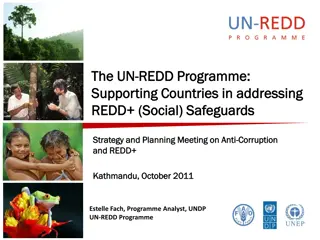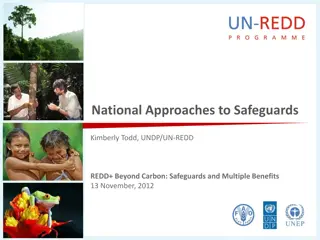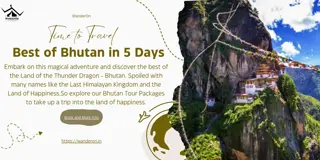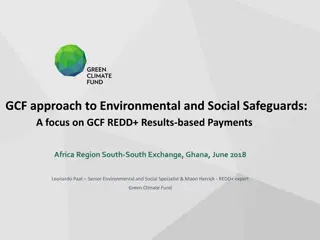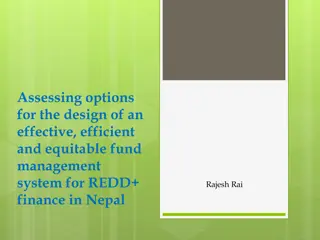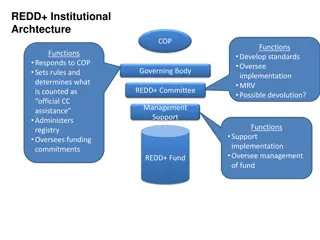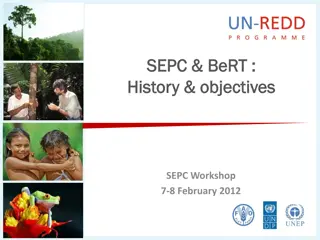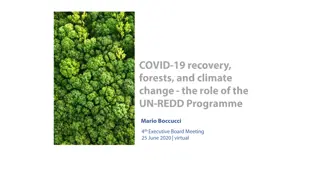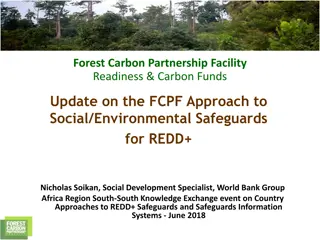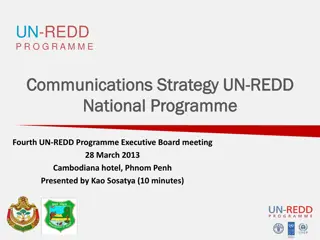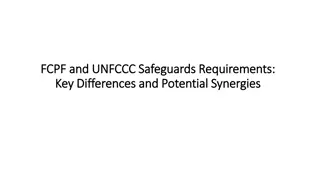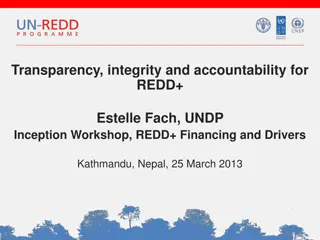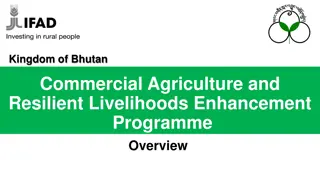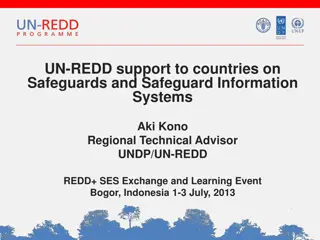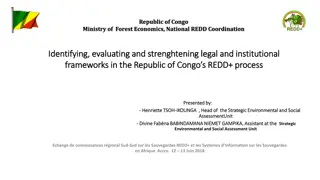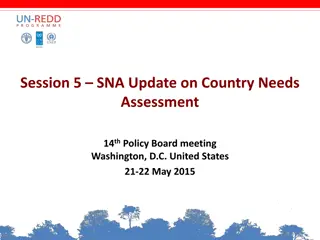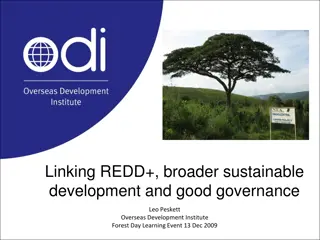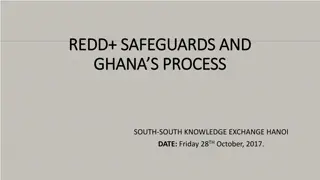Coordination Between National REDD+ Strategy and Safeguards in Bhutan: Experiences and Challenges
Bhutan's progress in developing its National REDD+ strategy and safeguards involves a strategic sequence of processes, engaging stakeholders, and addressing challenges such as lack of information and capacity. The coordination between the two components is crucial for successful REDD+ implementation in the country.
Uploaded on Sep 13, 2024 | 0 Views
Download Presentation

Please find below an Image/Link to download the presentation.
The content on the website is provided AS IS for your information and personal use only. It may not be sold, licensed, or shared on other websites without obtaining consent from the author. Download presentation by click this link. If you encounter any issues during the download, it is possible that the publisher has removed the file from their server.
E N D
Presentation Transcript
Coordination between the development processes of National REDD+ strategy and Safeguards: Experiences from Bhutan REDD+ Readiness (so far?) Regional South-South Learning event on country approaches to REDD+ safeguards and Safeguard Information Systems 26-27 October 2017, Hanoi, Vietnam Samten Wangchuk Department of Forest and Park Services, Ministry of Agriculture and Forests, Royal Government of Bhutan
Presentation lay out o Brief updates o Processes o Challenges o Opportunities o Lessons
Brief updates REDD+ Readiness phase (2014-2019) REDD+ Strategy/Action Plan Drivers study: preliminary strategy options identified Intensive field consultations of the strategy options and PAMs under process Safeguards (SESA/ESMF/SIS) A roadmap to country approach to REDD+ Safeguards for Bhutan 2016 Corruption Risks Assessments Stakeholder engagement guideline Technical Working Group on REDD+ Safeguards SESA works under process, strategy options finalization December will lead to safeguards works
Processes (linking processes) Followed/following sequence in the development of National REDD+ strategy and Safeguards Drivers of d & d study completed in 2016 REDD+ strategy works started in May 2017 (9 months) and safeguard works in June 2017 (12 months) Draft strategy options/interventions defined by December, 2017 SESA and identification of relevant safeguards based on defined strategy options (national consultants recruited to support international) Ensure engagement of similar stakeholders: eg: Joint workshop on REDD+ strategy and safeguards in Aug 2-4, 2017 REDD+ strategy consultations almost completed REDD+ strategy consultation teams will carry out conduct consultations onrelevant safeguards Possibility to link NFMS (ongoing) to SIS??? Conclusion: Proper sequencing of different REDD+ works is pivotal: Safeguards follow the REDD+ strategy options
Challenges Challenges Attempts to address Lack of information Rely on available data Lack of competence (REDD+ TWGs and secretariat) Capacity buildings of TWG members Workshops, study visits to advanced countries Uncertainty of future REDD+ Cautious on REDD+ awareness programs with the communities
Opportunities Comprehensive review of PLRs and linking to Cancun safeguards Considering all safeguards as a package (SESA/ESMF and SIS): Safeguard objectives to meet WB/FCPF and UNFCCC safeguard requirements REDD+ secretariat is mandated to coordinate various safeguards from the outset Engagement of all relevant stakeholders (different levels, different groups) Learning process (exchange programs for TWG members) and learn from advanced countries
Lessons REDD+ strategy options to be defined before identifying safeguards Building on existing systems (wherever possible) REDD+ (readiness phase) benefits nationally-no regret strategy: institutional capacity, stakeholder engagement and information generation (NFI, FIMS, NFMS) Heritage forest (14 till now), NFI (first report on NFI published), Land use land cover mapping (LULC 2016), database on forest information management system, awaraness workshops to academic institutes, built capacity of forestry for forest management and other stakeholders
THANK YOU For the opportunity to present and learn!



